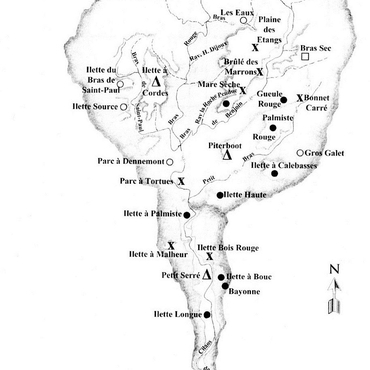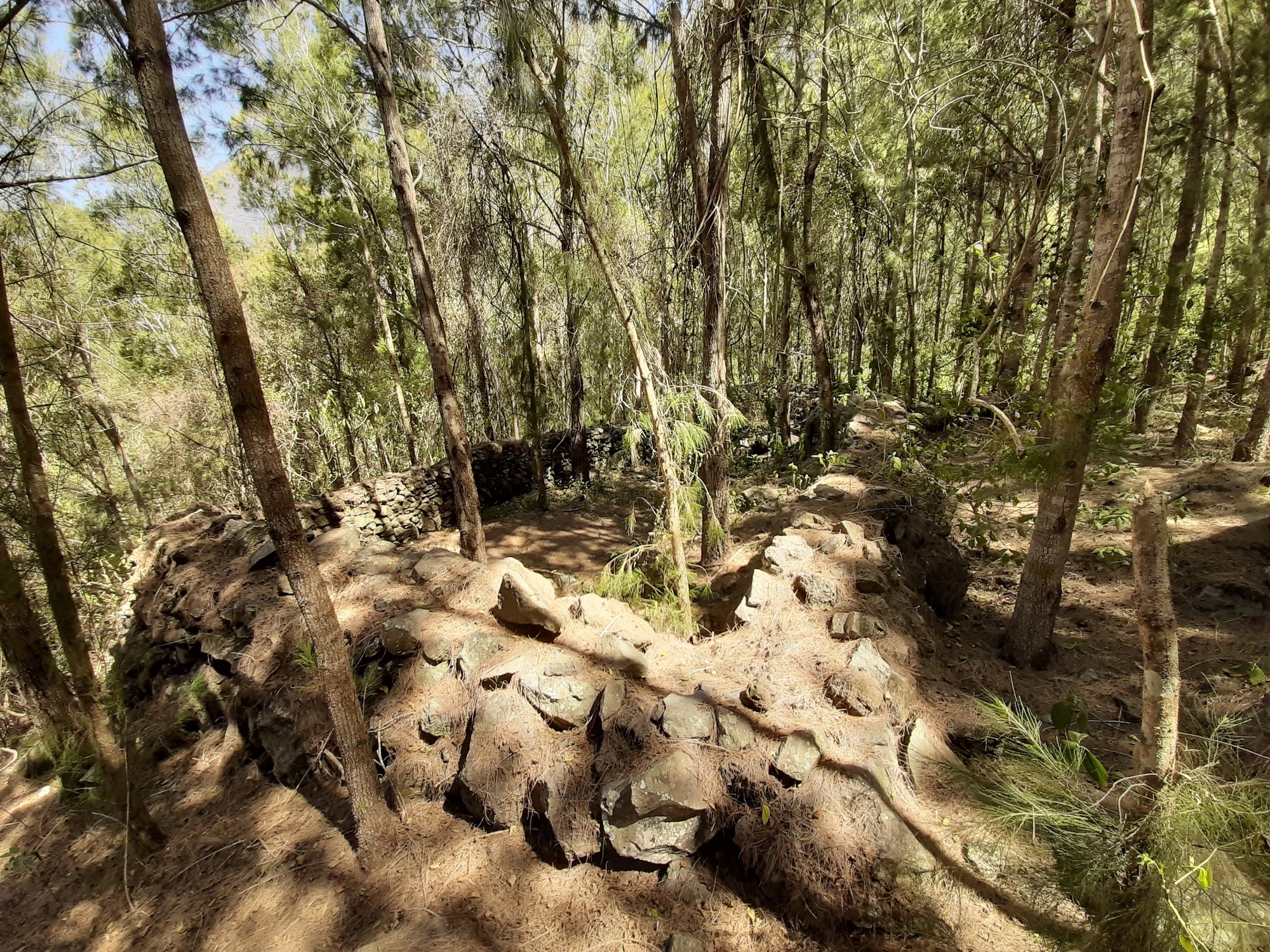
- Home
- Archaeology on Reunion Island
- Settling in the Hauts
- Small farming settlements of the “Petits-Blancs"
Colonial society on Bourbon consisted of white people, enslaved black people and free people of colour. An impoverished class – the Petits-Blancs or “Little Whites" – rapidly emerged within the first category, due in part to population growth and a shortage of land.
Driving forces behind the settlement of Les Hauts
The first high-altitude concessions were allocated to the settlers, partly to stem marronnage, but without roads or pathways this land was little used. In the late 18th century and early 19th, a marginalised, semi-nomadic white population emerged, wandering between the coastal plantations and the world of the marrons. These Petits-Blancs gradually settled the unoccupied land of Les Hauts.
The methods used by the administration to manage the island’s population in the 1830s and 1840s differed from one sector to another. Salazie became a district and it was possible to officially buy land. Food crops, coffee plantations and livestock breeding gradually took root in Cilaos and Mafate. Les Plaines were the last areas to be colonised in the 1850s.
Changing the landscape
Farming gradually shaped the landscape of Les Hauts. Land clearance, fires and farms were a source of endless conflict between the population and the authorities keen to conserve the island’s forests and soils.
Besides the anthropization of the landscape, the settlements created by the Petits-Blancs left their mark as their villages and communities grew. Archaeology offers a new way of understanding Les Hauts, where it seems almost every inch of land, even slightly fertile, regardless of how difficult it was to reach, was occupied at some time in the past. Examples include sites in the Mafate cirque such as Plaine-aux-Sables, Roche Plate and Plateau Picard, or at the base of ramparts in the former village of Cap Blanc and the islets of the Bras de la Plaine.







